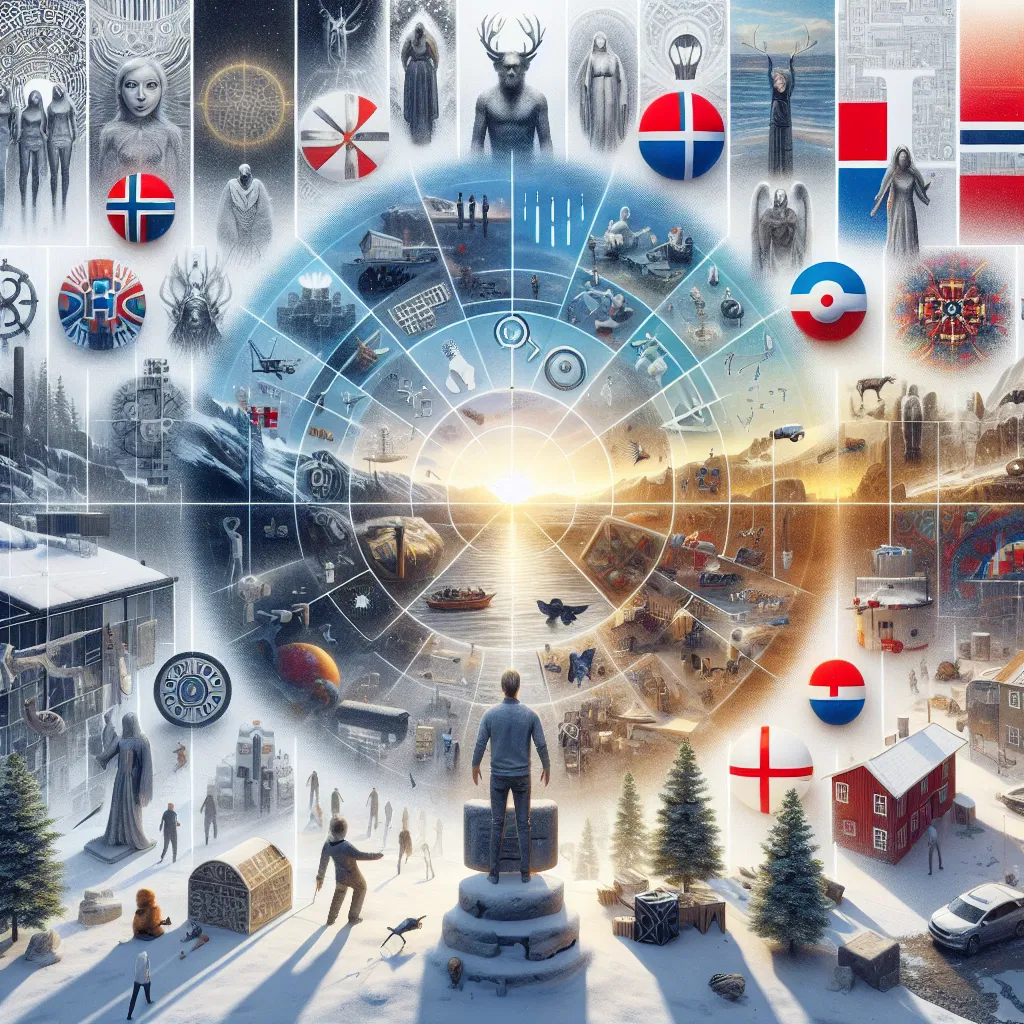Have you ever wondered how countries known for snow and stunning fjords come together to create economic marvels? Welcome to the world of the Nordic Regional—a blend of cooperative excellence that includes Norway, Sweden, Denmark, Finland, and Iceland. These countries, often referred to as the Nordic countries, have developed a regional collaboration that not only supports economic growth but also champions sustainability, equality, and innovation. But what truly makes this partnership a beacon of regional unity? Let's break it down together to uncover the secrets of its success.
A Brief History of the Nordic Regional
The idea of Nordic collaboration isn't exactly modern. In fact, it traces back centuries, though the formal institutions took shape in the mid-20th century. Post-World War II, Europe saw widespread efforts for peace and cooperative rebuilding, and the Nordic countries were no exception. In 1952, they created the Nordic Council, a forum to foster cooperation between parliaments and governments. Later, the Nordic Council of Ministers came into being in 1971 to support this collaborative spirit more practically.
This historic partnership aims to balance the sovereign aspirations of each nation with shared goals that maximize the region's influence and prosperity on the global stage. By now, you might be asking—what does it mean for a region to be 'Nordic'?
What Defines 'Nordic'?
Geographically and culturally, the Nordic countries are closely knit, sharing not only geographical proximity but social and cultural values. What ties these nations together is a blend of trust, equality, and a high regard for human rights. They have managed to create egalitarian societies that rank high in quality of life indices worldwide.
One hallmark of the Nordic model is a robust welfare system, often seen as a seamless mesh of free markets and social benefits. This system acts as both safety net and trampoline, ensuring that every citizen has opportunities for thriving, limited only by their ambitions and not socioeconomic backgrounds. It's no wonder these nations consistently rate high on measures of happiness and social capital.
Why Is the Nordic Regional Model Successful?
You might be wondering: what fuels this successful collaboration on both macro and micro levels? One major factor is equality—economic, social, and political. By promoting inclusive growth, these countries have managed to build resilient economies open to innovation and adaptable in the face of challenges like climate change or technological shifts.
Another critical component is the emphasis on education and research. Nordic countries spend a significant portion of their GDP on public education, research, and development. This approach not only drives quick technological adaptability but also places them at the forefront of cutting-edge research in sustainability and technology. Furthermore, their policies aim for sustainable development, balancing economic growth with environmental protection, a pressing concern for future generations.
The Role of Economic Integration
One compelling aspect of the Nordic regional collaboration is the seamless economic integration between these countries, deeply rooted in their shared values and vision. They embrace open economies, favoring free trade that benefits from diversification and specialization within the region. Industries ranging from technology to fish farming operate across borders with ease, nurtured by favorable policies and shared commitments.
The Nordic model also serves as a cornerstone in the global economy. These countries possess a high degree of technological readiness, supported by robust digital infrastructures and sound regulatory environments. Such economic features allow them to partner worldwide, influencing global trade policies and technological standards.
Cultural and Social Dynamics
It's fascinating to understand the social dynamics that make the Nordic realm tick. Cultural homogeneity, dialects that resemble each other, and historic ties contribute to their coherent identity. Through shared languages and a collective mindset, cross-border learning and collaboration flourish effortlessly.
A commitment to gender equality and a focus on transparency and anti-corruption initiatives have fostered trust throughout their societies. Policies promoting work-life balance and community involvement ensure that citizens remain engaged and contribute actively to societal progress.
Challenges and Opportunities
Even with such exemplary models, Nordic countries are not without challenges. Issues like aging populations and global competitiveness test their resilience. However, these challenges are met with optimism and creativity. For instance, efforts to leverage digital technologies to improve healthcare, public services, and green transitions are underway, drawing the world's attention to the Nordic's innovative solutions.
The Nordic Region is also an exciting case study for addressing climate change, leading conversations on sustainable urban planning, green technology, and renewable energy use. Their proactive strategies make it clear that collaboration and innovation go hand in hand in tackling global issues, setting examples for other regions to mimic.
A Vision for the Future
With the globe moving towards an ever-more interconnected future, the Nordic Regional stands as a symbol of what can be achieved through cooperation and shared values. While distinct, they mutually benefit from joint policies, educational exchanges, and shared innovations in infrastructure and technology.
If the Nordic Regional can teach us one thing, it's the power of unity interwoven with a shared vision for a better tomorrow—a vision rooted in respect, sustainability, and progress. It's a model from which we all have much to learn, extending beyond borders and spanning across the myriad challenges facing our world today.

